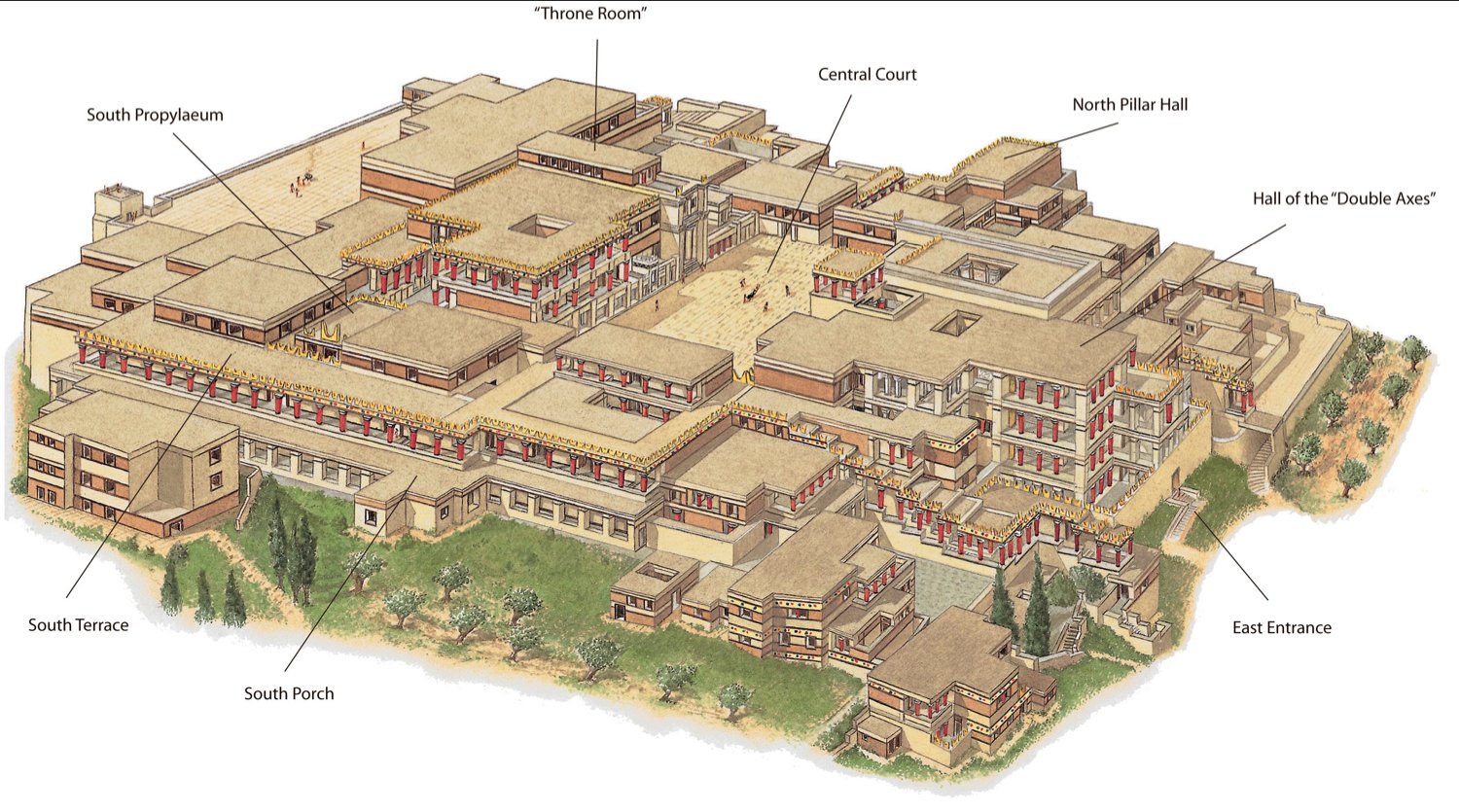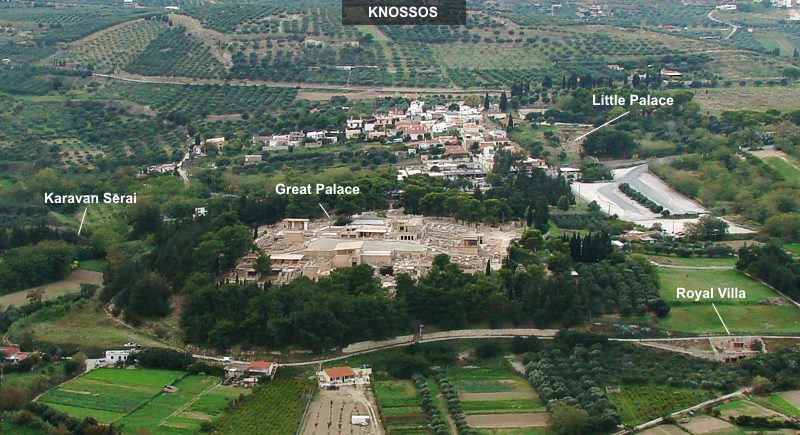 Knossos, the brightness sample of Minoan civilization, is located on Kefalas hill, 5km south-east of Heraklion city, in the valley of Kairatos river and is surrounded by olives, vineyards and cypresses.
Knossos, the brightness sample of Minoan civilization, is located on Kefalas hill, 5km south-east of Heraklion city, in the valley of Kairatos river and is surrounded by olives, vineyards and cypresses.
The first settlement in Knossos dates back to approximately 7000 BC in the Neolithic Age. The economic, social and cultural acme of this settlement led to the erection of the majestic palace of Knossos at the end of the second millennium BC. These palaces consisted of an almost entire city. It included hostels, outside baths, sanctuaries, workshop for the palace decoration and grooming, food stores, kings’ rooms, throne room, adjutants’ shelters, banquet halls with innumerable stairs and terraces.
The city was constantly inhabited until Roman period, as was evidenced by some later monuments and cemeteries of various periods. The palace was developed and extended to a large area and of course became the siege of King Minos and the capital of his state. The state consisted of one hundred cities and of Cyclades which were called Minoides. The city reached its peak with its first palaces (19th -17th century BC) and with the second ones (16th -14th century BC). At around 1700 BC, it is believed that a major earthquake destroyed Knossos and thus, large-scale works started to be conducted in order to reconstruct the city and palace.
 In 1878 and while Crete was still under Turkish occupation, the first large excavation in the area was conducted by the wealthy merchant and archaeologist Minos Kalokairinos who came from Heraklion.
In 1878 and while Crete was still under Turkish occupation, the first large excavation in the area was conducted by the wealthy merchant and archaeologist Minos Kalokairinos who came from Heraklion.
In 1900 Arthur Evans excavated the palace and the wider area near Knossos and the excavation lasted until 1931. Evans proceeded to the restoration of the palace using cement, a technique that today is criticized as arbitrary and aggravating for the Minoan structure.
The archaeological site of Knossos arouses awe and respect to visitors who comes into direct contact with history by “travelling” in the depths of time, reviving and experiencing the magnificence and glory of the Minoan civilization.
Should you need additional information please visit the relevant page at the site of the Ministry of Culture.